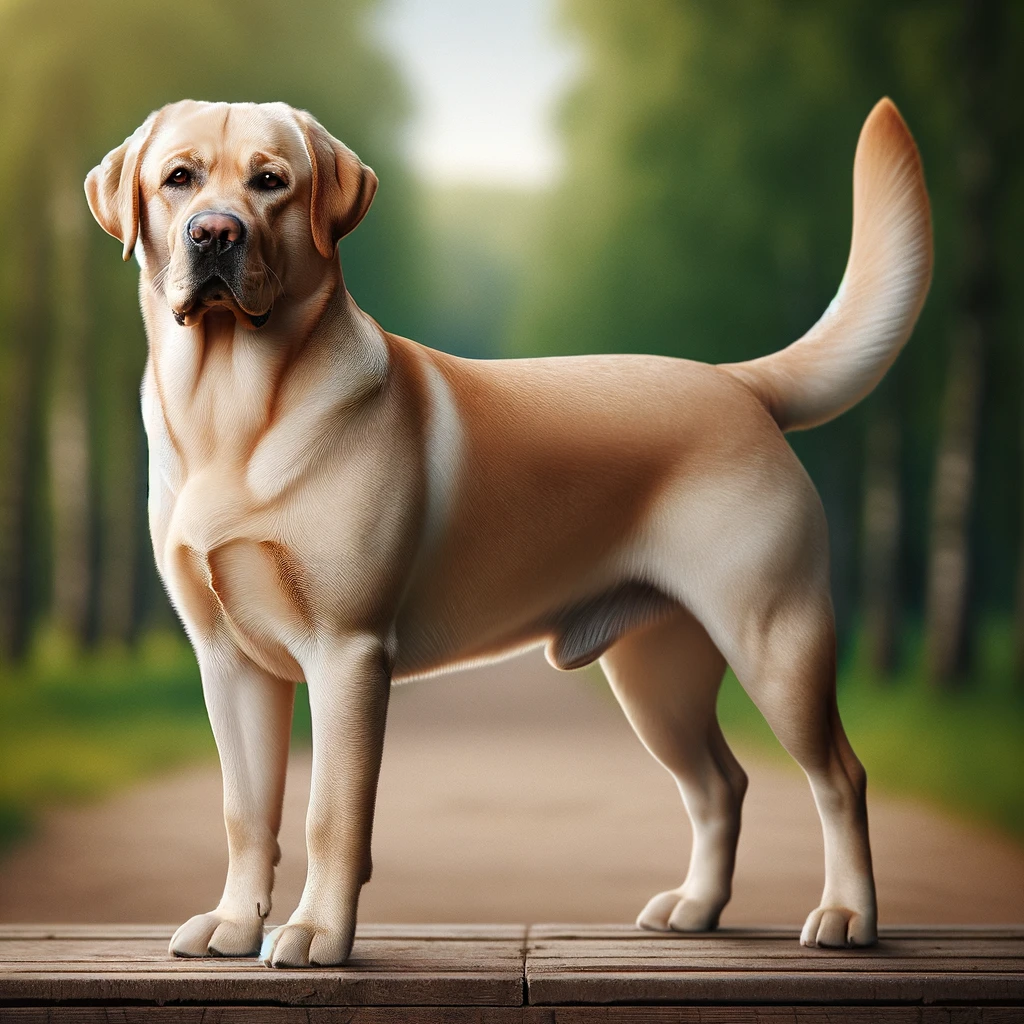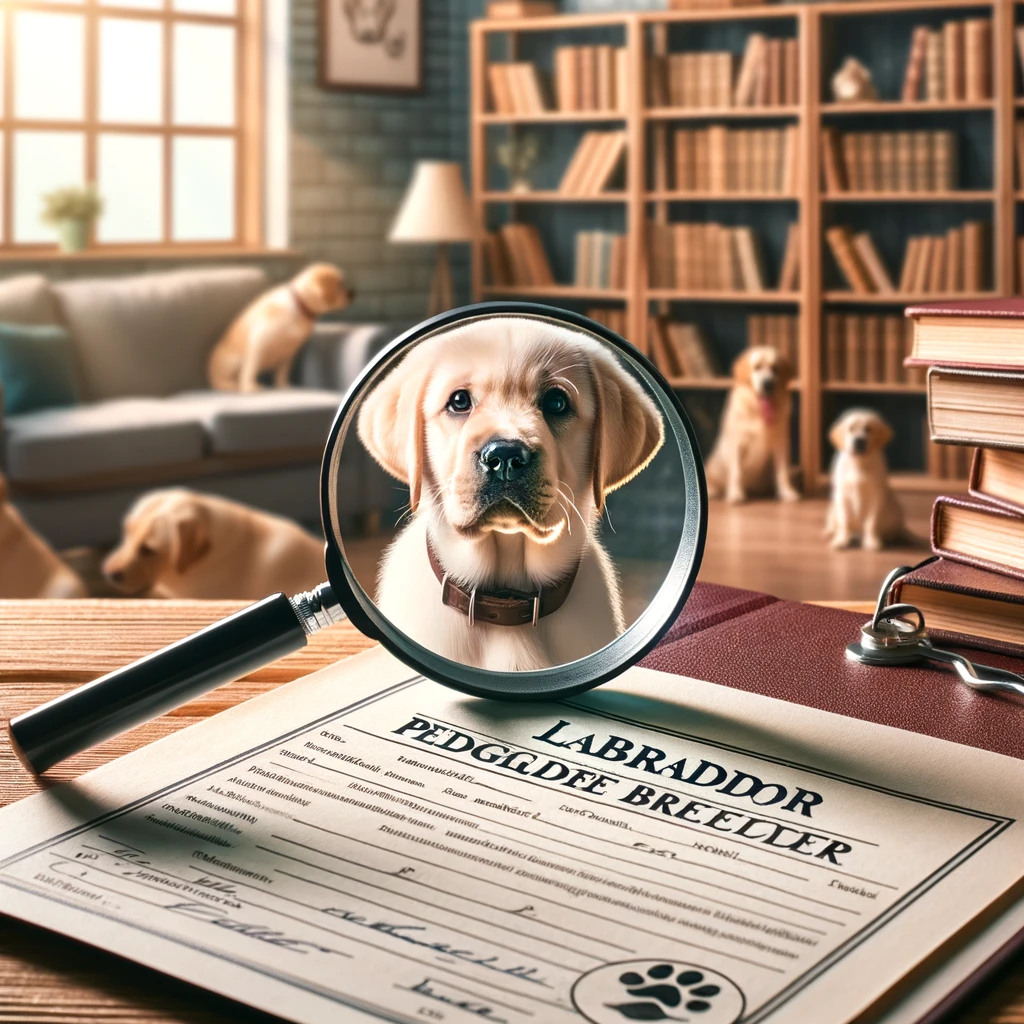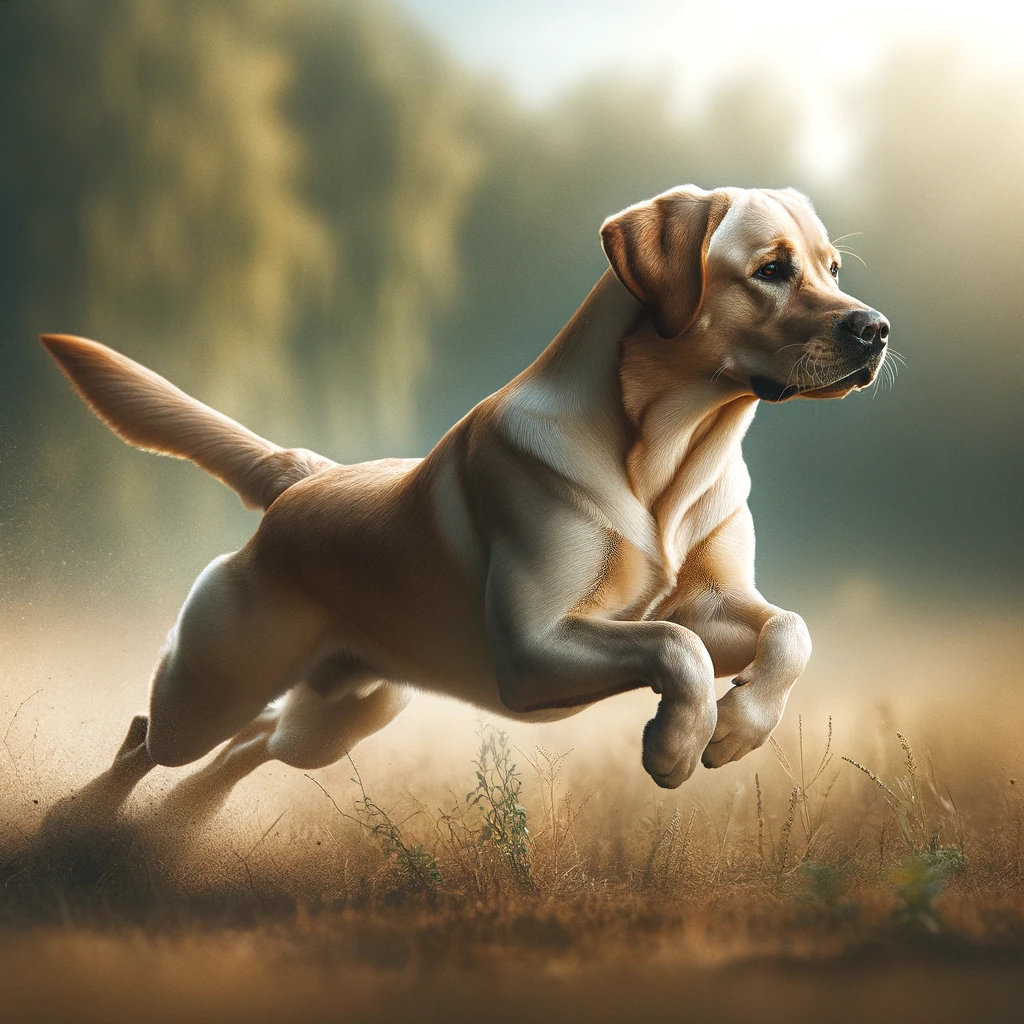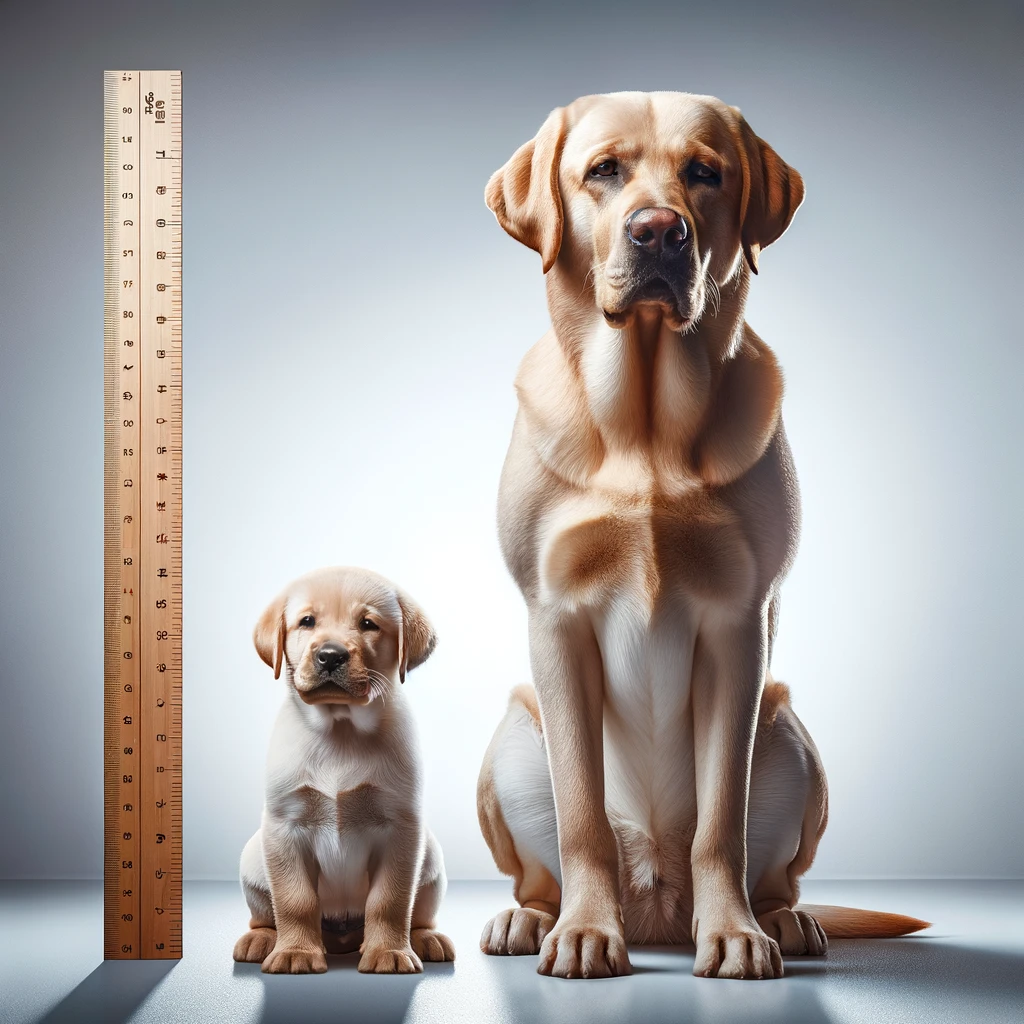Hey, fellow dog lovers! Today, we’re diving into the world of Labrador Retrievers to uncover the secrets behind identifying a purebred. Labradors are not only America’s favorite dog breed but also a symbol of loyalty, friendliness, and boundless energy.
Whether you’re planning to adopt, buy, or just curious, knowing how to tell if a Lab is purebred is crucial. So, here I am with 10 Easy Tips to Identify a Purebred Labrador Retriever ! Grab your detective hat, and let’s get started with these 10 easy tips!

| Trait Category | Details |
|---|---|
| A. Broad and Balanced Head | – Wide skull with a pronounced stop – Ears set far back, hanging close to the head – Medium-sized, kind-eyed expression |
| B. Strong and Muscular Body | – Sturdy neck without looseness of skin – Well-defined chest and well-sprung ribs – Level and strong back |
| C. Distinctive Tail | – Thick “otter” tail that tapers to a point, covered in dense fur, aiding in swimming |
| D. Double Coat | – Soft, weather-resistant undercoat – Short, dense, straight outer coat |
| E. ‘Otter’ Tail | – Thick at the base, tapering towards the tip, covered in dense, short hair |
| F. Athletic Build | – Fit, agile body with well-developed muscles, especially in the hindquarters |
| G. Appropriate Size | – Males: 22.5 to 24.5 inches at the withers – Females: 21.5 to 23.5 inches |
| H. Movement | – Effortless and efficient gait with smooth, powerful stride |
| I. Color Consistency | – Comes in three colors: black, yellow, and chocolate, each solid and uniform |
This table summarizes the key physical traits that can help you identify a purebred Labrador Retriever. Each category encapsulates critical aspects of the breed’s appearance and functional build, reflecting the standards set by kennel clubs and breed enthusiasts.
📜1. Check the Pedigree Papers
The most straightforward way to verify if your Labrador is purebred is by checking their pedigree papers. Reputable breeders provide these documents, detailing the dog’s lineage and registration with kennel clubs like the AKC (American Kennel Club).
Pedigree papers are your first line of assurance, tracing back generations to ensure the purity of the breed. If a breeder hesitates to show these documents, it might be a red flag.

🧬2. DNA Testing
For those who love a bit of science, DNA testing has become an accessible and reliable method to determine breed purity. Several companies offer dog DNA tests that can pinpoint your Labrador’s genetic background.
This method goes beyond just identifying the breed; it can also provide insights into potential health risks and traits. It’s a simple, albeit a bit pricier, way to get peace of mind about your Lab’s lineage.
👀3. Physical Characteristics
Purebred Labradors have distinct physical traits that set them apart. Look for a broad head, powerful jaw, kind eyes, and a “double coat” with a water-resistant layer. Their tails, often referred to as an “otter tail,” are another giveaway.
These physical markers are benchmarks for breed standards. However, remember that there can be variations within the breed.
Diving deeper into the hallmark of purebred status, the physical traits of a Labrador Retriever can be quite telling. Here’s a detailed listicle of characteristics that distinguish a purebred Labrador:

A. Broad and Balanced Head
- Skull: The skull of a purebred Labrador is wide with a pronounced stop (the point at which the nose meets the forehead). This feature contributes to their distinctive, friendly expression.
- Ears: Set rather far back and hanging close to the head, their ears should not be too large or heavy. They lend a balanced look to the face, adding to the Lab’s amiable appearance.
- Eyes: A hallmark of the breed, Labrador eyes are medium-sized, either brown or hazel, with an intelligent and kind expression. The eyes are set well apart, enhancing their alert yet gentle demeanor.
B. Strong and Muscular Body
- Neck: Strong and sturdy, without any looseness of skin, the neck of a Labrador should grant it a proud posture and contribute to its powerful appearance.
- Chest and Ribs: Look for a well-defined chest that reaches down to the elbows, coupled with well-sprung ribs. This build supports their athletic nature and stamina.
- Back: A purebred Lab’s back is level and strong, from the shoulder blades to the slightly sloping croup, indicating a solid structure and muscular strength.

C. Distinctive Tail
- The “otter” tail is a signature trait of the Labrador Retriever. It is thick at the base, gradually tapering towards the tip, and covered in dense, short hair without feathering. This tail serves as a powerful rudder, aiding in swimming, which is a favorite activity for Labs.
D. Double Coat
- A Labrador Retriever boasts a double coat consisting of a soft, weather-resistant undercoat that provides insulation and a short, dense, straight outer coat. This double layer is essential for their original job as retrievers in cold water, offering protection against the elements.
E. “Otter” Tail
- Unique to the breed, the “otter” tail is thick at the base, tapering to a point, and covered in the same dense fur as the body. It’s a distinguishing feature that helps in swimming, showcasing the breed’s retrieving roots.

F. Athletic Build
- Labradors are bred for physical endurance and strength. A fit, agile body with well-developed muscles, especially in the hindquarters, speaks to their purebred lineage and working background.
G. Appropriate Size
- According to breed standards, male Labradors should stand at 22.5 to 24.5 inches at the withers, with females slightly smaller at 21.5 to 23.5 inches. This size enables agility, strength, and versatility in various roles.
H. Movement
- The gait of a purebred Labrador should be effortless and efficient. When observing a Lab move, you should see a smooth, powerful stride with good reach in the front and strong drive in the rear.
I. Color Consistency
- Purebred Labradors come in three colors: black, yellow, and chocolate. Each is solid and uniform, though yellows can range in shade from cream to fox-red. A purebred Lab’s coat should not have brindling or patches of unexplained colors.
⚖️4. Weight and Height
Labradors have a standard weight and height range, generally between 55 to 80 pounds, with males being larger than females. Their height at the withers ranges from 21.5 to 24.5 inches.
Deviations can occur, but extreme outliers are rare in purebreds. Knowing the standard measurements helps in identifying a purebred Lab.

🐕5. Coat Colors
Labrador Retrievers come in three recognized colors: black, yellow, and chocolate. Any other color or patterns might indicate mixed ancestry.
While silver Labradors have gained popularity, they’re not recognized by all kennel clubs as a standard color, which can be a topic of debate among breed enthusiasts.

🚶♂️6. Gait and Movement
The way a Labrador moves can also hint at its breed purity. Purebreds display a smooth, efficient gait, with a strong drive from the hindquarters.
Watching a Lab in motion should give the impression of stability and power, without any signs of awkwardness or imbalance.
🩺7. Health Checks
Labradors are predisposed to certain genetic health conditions, such as hip dysplasia and PRA (Progressive Retinal Atrophy). While not a direct indicator of breed purity, knowing a Lab’s health background and risks can provide clues.
Reputable breeders conduct health screenings and genetic testing on their breeding dogs to minimize these risks. Ask for health clearance documents when considering a puppy.
🐾8. Temperament
Labradors are renowned for their friendly, outgoing, and non-aggressive demeanor. A purebred Lab should be sociable, eager to please, and trainable.
While personality can vary, extreme shyness or aggressiveness is atypical and worth noting when assessing a Lab’s breed purity.

🎓9. Breeders and Kennel Clubs
Choosing a reputable breeder affiliated with recognized kennel clubs is another way to ensure you’re getting a purebred Labrador. These breeders adhere to breeding standards and are committed to the health and welfare of the dogs.
Research breeders thoroughly and look for those with a solid reputation and a transparent breeding process.
🔍10. Expert Evaluation
Lastly, when in doubt, seek the opinion of a vet or a professional dog trainer familiar with the Labrador breed. They can provide valuable insights based on the dog’s physical attributes, behavior, and overall health.
An expert’s evaluation can complement your research, giving you a comprehensive understanding of your Lab’s pedigree.
Conclusion:10 Easy Tips to Identify a Purebred Labrador Retriever
Identifying a purebred Labrador involves a mix of documentation, physical examination, and sometimes a bit of genetics. While having a purebred Lab comes with its perks, remember that love, care, and training are what truly make a dog a loyal and happy companion.
For more tips on dog care and understanding different breeds, check out reputable sources like The American Kennel Club and [The Labrador
Retriever Club, Inc.](https://www.thelabradorclub.com). Whether your Lab is purebred or a mix, they’re a part of your family, and that’s what matters most. Happy Labrador loving! 🐾💕
